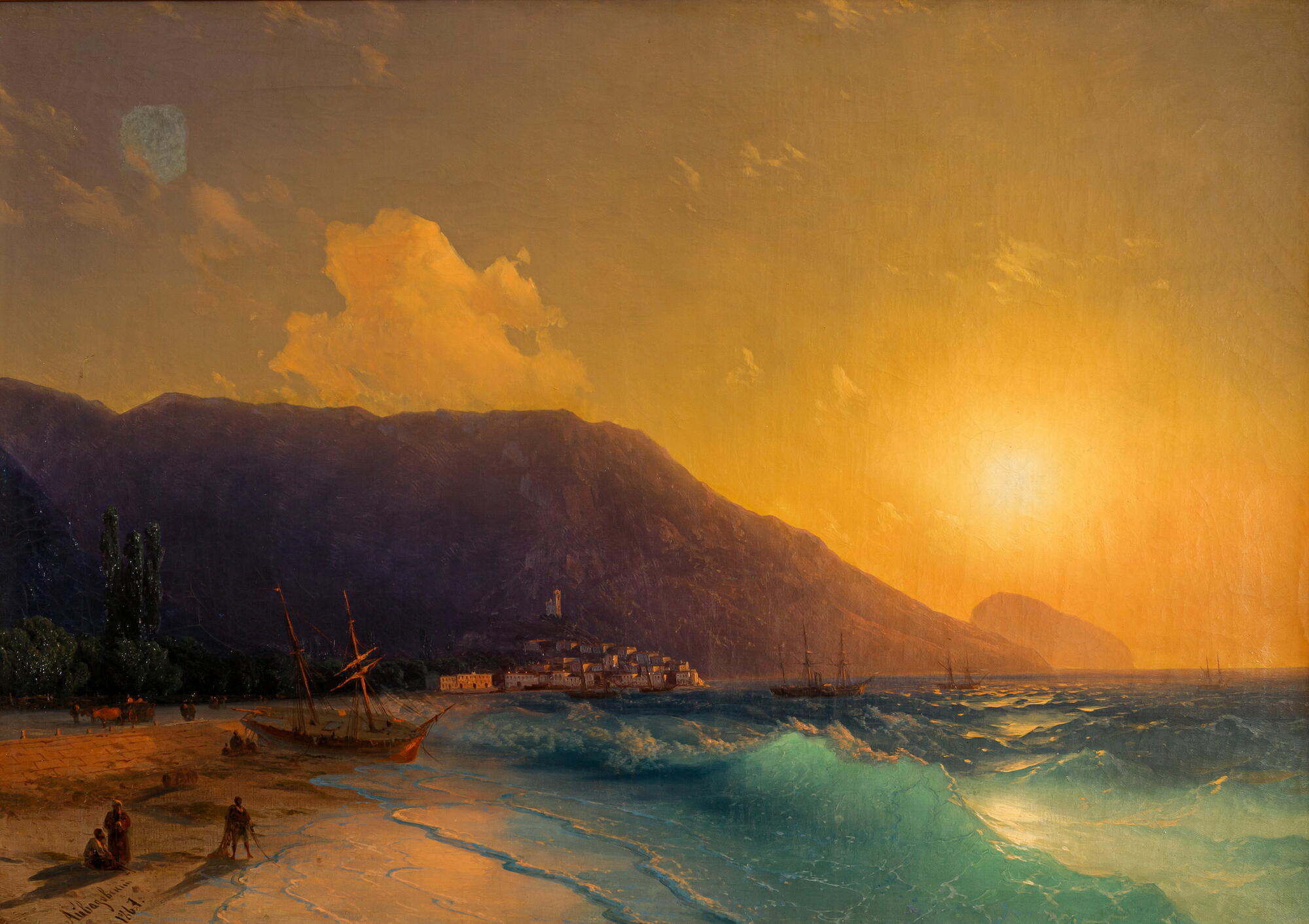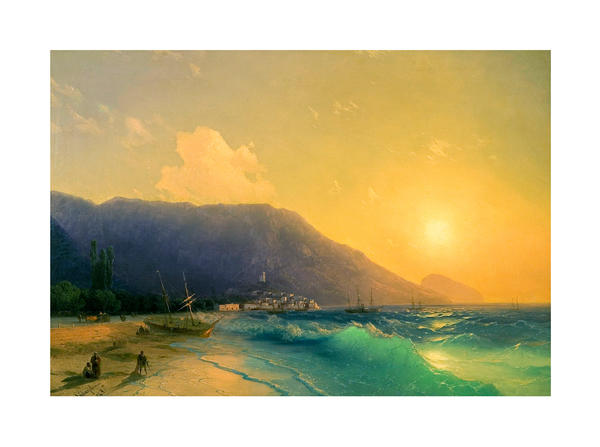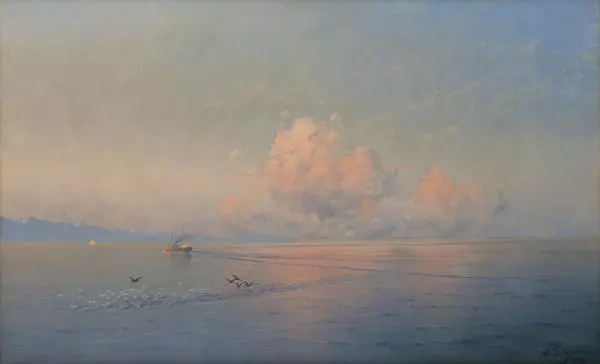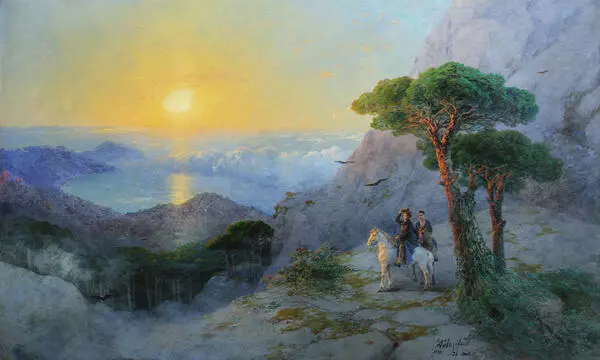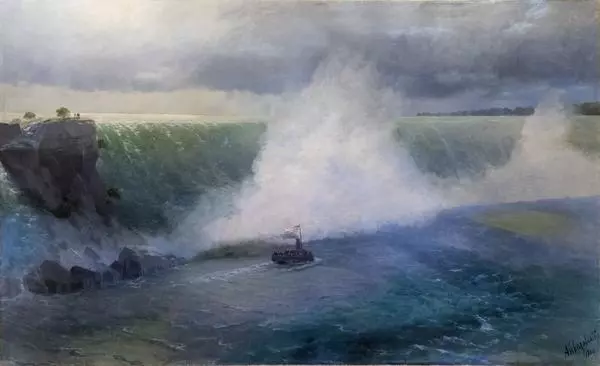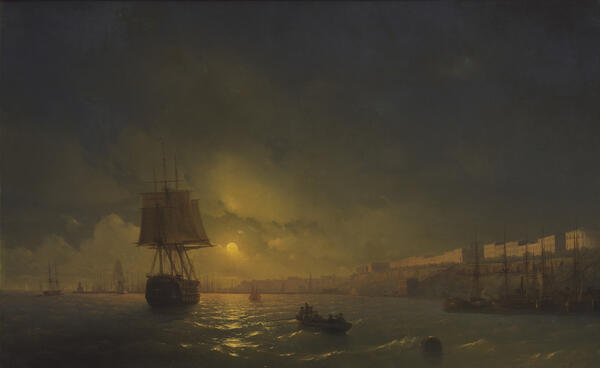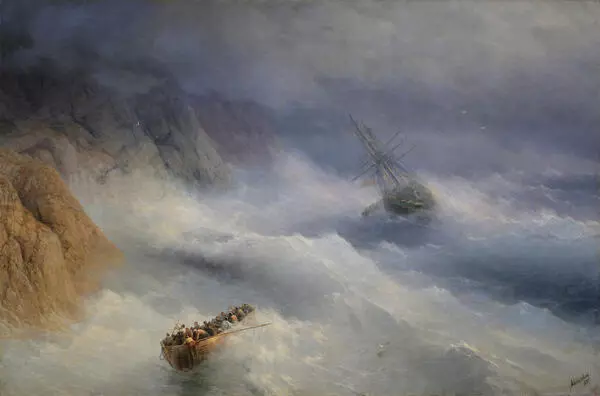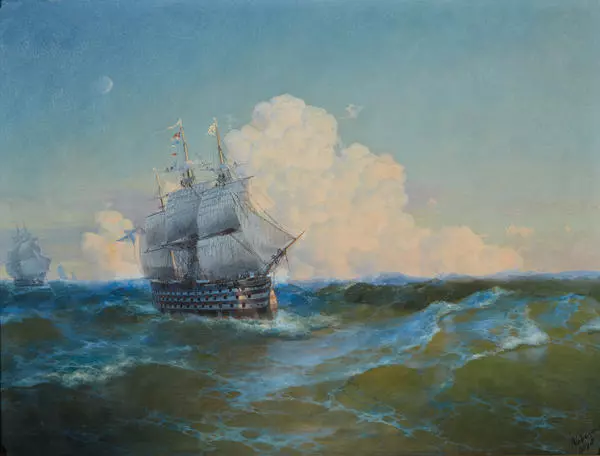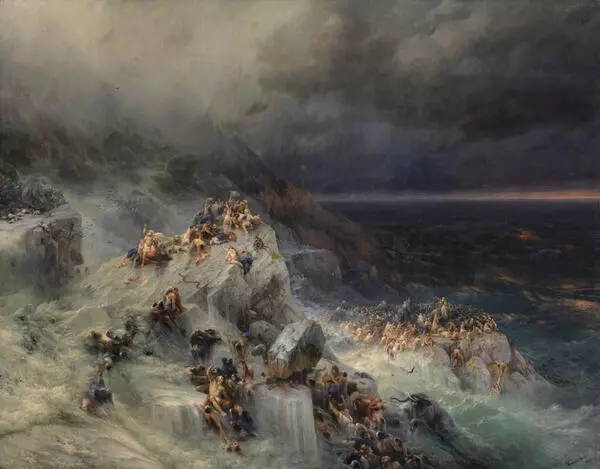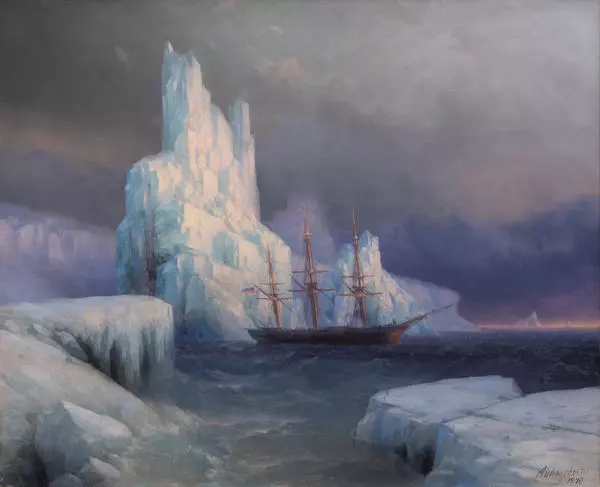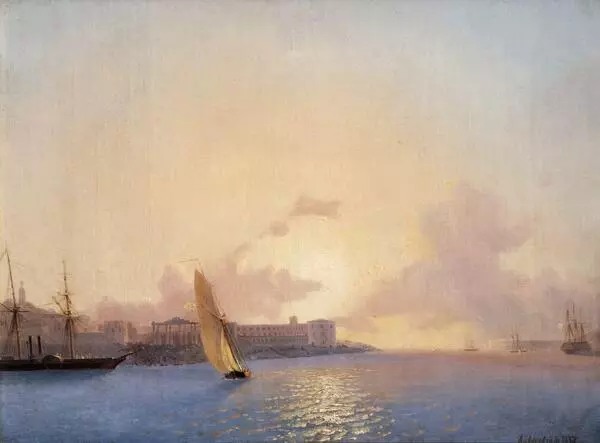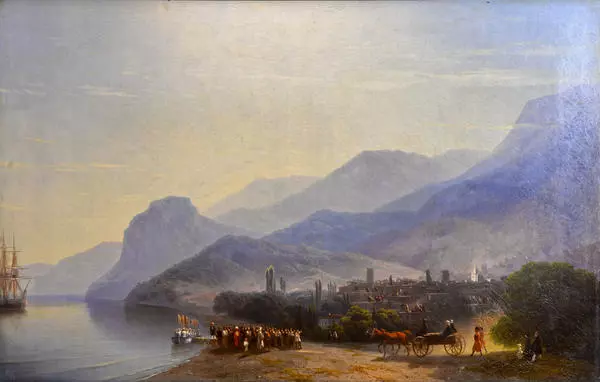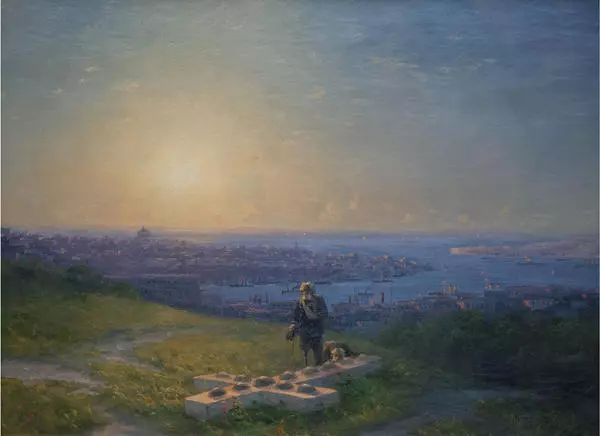The Voronezh Art Museum was named after the famous painter Ivan Kramskoy. The artist referred to Ivan Aivazovsky as “the first-magnitude star in the history of art”. Emperor Nicholas I praised the painter saying,
#13
#20
Anything painted by Aivazovsky will be bought by me.
#21
Ivan Aivazovsky was the greatest Russian master of marine art. During his 70-year career, he created over 6,000 paintings, with many of them regarded as national treasures. He was born as Hovhannes Aivazian into an Armenian family in the Black Sea port of Feodosia. Having traveled extensively throughout his life, Aivazovsky was still most inspired by Crimea. In his paintings, the sea is always alive — wild and stormy in his earlier works, and peaceful and serene in his later art.
Ivan Aivazovsky always relied on his talent, vitality, and enthusiasm for life. After graduating from school, Aivazovsky enrolled at the Imperial Academy of Arts as a scholarship student. He graduated from the Academy with a Gold Medal. For the first time, he participated in an exhibition as a student with his “Study of Air Over the Sea” which was highly praised by critics. After a four-year internship in Europe, Ivan Aivazovsky returned to Saint Petersburg as a recognized artist.
By the age of thirty, Ivan Aivazovsky had become a professor of the Academy of Arts, the official painter of the Russian Navy with a right to wear a navy uniform and a member of five European Academies of Arts. Later, the painter was awarded ten international orders for his contribution to art, was appointed a member of the Russian Geographical Society and a full privy councilor and became the first representative of his dynasty to be elevated to the rank of nobility.
“Sea View” by Ivan Aivazovsky entered the collection of the Voronezh Art Museum in 1933. Before that, it had been housed by the Museum of Antiquities and Fine Arts at the Voronezh State University. The painting immediately attracts the viewer’s attention with the moving sunlit sea wave. This was Aivazovsky’s signature technique achieved with the help of glazing. The artist consequently applied thin semi-transparent layers of paint one onto another, slightly changing the hues and creating the effect of depth. Aivazovsky preferred to paint with oil, but many of his works resembled airy watercolors. Contemporaries assumed that he knew a secret paint recipe.
“Sea View” does not merely reflect the beauty of nature and the changing sea but also portrays humans as an integral element of the universe. Every person in his paintings is in a way a self-portrait. The artist could spend hours on end watching the sea, observing its behavior, and preparing sketches which he later used for his paintings. He never painted his seascapes from nature, considering it impossible to capture its ever-changing beauty in this way.
Ivan Aivazovsky always relied on his talent, vitality, and enthusiasm for life. After graduating from school, Aivazovsky enrolled at the Imperial Academy of Arts as a scholarship student. He graduated from the Academy with a Gold Medal. For the first time, he participated in an exhibition as a student with his “Study of Air Over the Sea” which was highly praised by critics. After a four-year internship in Europe, Ivan Aivazovsky returned to Saint Petersburg as a recognized artist.
By the age of thirty, Ivan Aivazovsky had become a professor of the Academy of Arts, the official painter of the Russian Navy with a right to wear a navy uniform and a member of five European Academies of Arts. Later, the painter was awarded ten international orders for his contribution to art, was appointed a member of the Russian Geographical Society and a full privy councilor and became the first representative of his dynasty to be elevated to the rank of nobility.
“Sea View” by Ivan Aivazovsky entered the collection of the Voronezh Art Museum in 1933. Before that, it had been housed by the Museum of Antiquities and Fine Arts at the Voronezh State University. The painting immediately attracts the viewer’s attention with the moving sunlit sea wave. This was Aivazovsky’s signature technique achieved with the help of glazing. The artist consequently applied thin semi-transparent layers of paint one onto another, slightly changing the hues and creating the effect of depth. Aivazovsky preferred to paint with oil, but many of his works resembled airy watercolors. Contemporaries assumed that he knew a secret paint recipe.
“Sea View” does not merely reflect the beauty of nature and the changing sea but also portrays humans as an integral element of the universe. Every person in his paintings is in a way a self-portrait. The artist could spend hours on end watching the sea, observing its behavior, and preparing sketches which he later used for his paintings. He never painted his seascapes from nature, considering it impossible to capture its ever-changing beauty in this way.
#19
Ministry of Culture of the Russian Federation
читать дальшескрыть
00:00
00:00
1x
Sea View
Время создания
1867
Размер
61x83 cm
Техника
canvas, oil
25
Открыть в приложении
Поделиться
